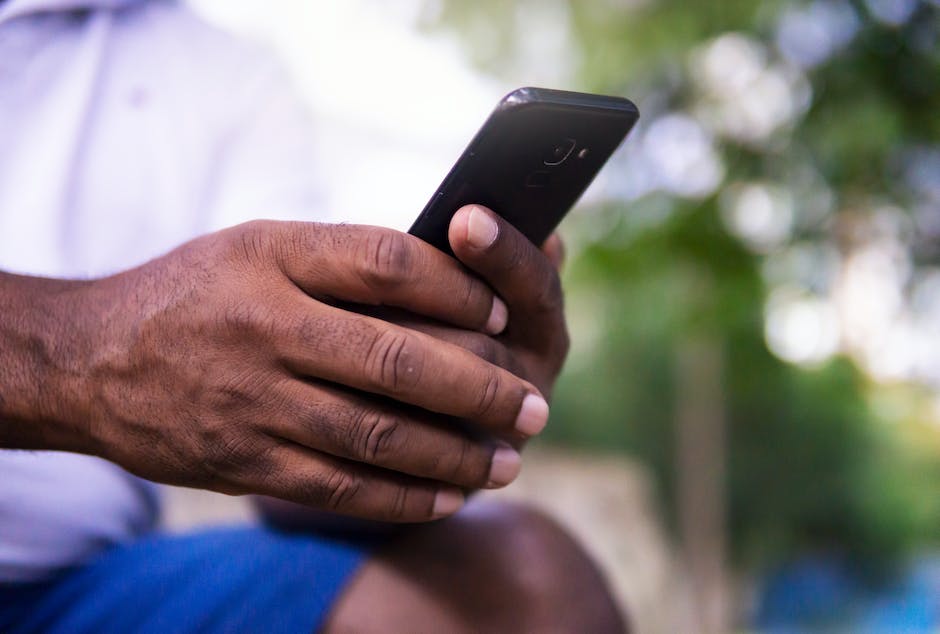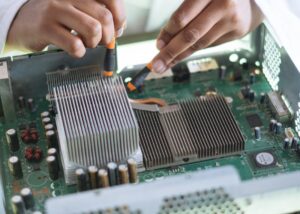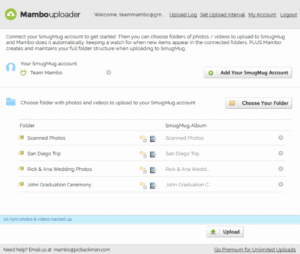-
Table of Contents
Samsung: Putting an end to curved panels – because some ideas are better left flat.
Samsung has decided to discontinue the use of curved panels in their latest cell phone. This decision comes as a result of recognizing the drawbacks and limitations associated with curved panels, which have been deemed as not being a good idea.
The Evolution of Curved Panels in Samsung Cell Phones
Samsung has long been known for its innovative designs and cutting-edge technology in the world of cell phones. One of the company’s most notable design choices has been the use of curved panels in their devices. However, recent reports suggest that Samsung may be moving away from this design feature in their upcoming cell phone models. This decision begs the question: why were curved panels never a good idea in the first place?
To understand the evolution of curved panels in Samsung cell phones, it is important to go back to the beginning. The first Samsung device to feature a curved panel was the Galaxy Note Edge, released in 2014. This device had a unique design with a curved edge on one side of the screen, providing users with additional functionality and quick access to notifications and shortcuts. It was a bold move by Samsung, and many consumers were intrigued by this new design concept.
Following the success of the Galaxy Note Edge, Samsung continued to incorporate curved panels in their subsequent cell phone models. The Galaxy S6 Edge, released in 2015, featured dual curved edges, giving the device a sleek and futuristic look. This design choice was met with enthusiasm from consumers, as it added a touch of elegance and uniqueness to the device.
However, as time went on, it became clear that curved panels were more of a gimmick than a practical feature. One of the main issues with curved panels is their susceptibility to accidental touches. Due to the curved nature of the screen, users often found themselves unintentionally activating apps or functions on the edges of the display. This was not only frustrating for users but also resulted in a less than optimal user experience.
Another drawback of curved panels is their limited functionality. While the curved edges may look aesthetically pleasing, they do not offer any significant advantages in terms of usability or functionality. In fact, some users found that the curved edges made it more difficult to hold the device comfortably, as their fingers would often rest on the curved portion of the screen.
Furthermore, the use of curved panels also presented challenges in terms of durability and repairability. The curved nature of the screen made it more susceptible to cracks and damage, and replacing a curved panel was often more expensive and time-consuming than replacing a flat one.
As a result of these issues, it is not surprising that Samsung is considering moving away from curved panels in their future cell phone models. While the initial excitement and novelty of curved panels may have garnered attention, it is clear that they were never a good idea from a practical standpoint.
In conclusion, the evolution of curved panels in Samsung cell phones has been an interesting journey. From the initial excitement and innovation to the realization of their limitations, it is clear that curved panels were never a good idea. As Samsung looks to the future, it is likely that they will focus on more practical and user-friendly design choices, leaving the curved panels behind.
Pros and Cons of Curved Panels in Samsung Devices
Samsung has long been known for its innovative designs and cutting-edge technology in the smartphone industry. One of the company’s notable design choices in recent years has been the use of curved panels in their devices. However, it seems that Samsung is now moving away from this trend with their latest cell phone release. In this article, we will explore the pros and cons of curved panels in Samsung devices and discuss why they may not have been such a good idea after all.
One of the main advantages of curved panels is their aesthetic appeal. The curved edges give the device a sleek and futuristic look, which can be quite appealing to consumers. Additionally, the curved design allows for a more immersive viewing experience, as the screen seems to wrap around the edges of the device. This can be particularly advantageous when watching videos or playing games, as it creates a more engaging visual experience.
Another benefit of curved panels is the potential for improved ergonomics. The curved edges make the device more comfortable to hold, as they contour to the shape of the hand. This can reduce strain on the fingers and make it easier to navigate the device with one hand. Additionally, the curved design can help prevent accidental touches on the edges of the screen, as the fingers are less likely to come into contact with the display.
However, despite these advantages, there are several drawbacks to curved panels that may have led Samsung to reconsider their use. One of the main issues is the increased fragility of the device. The curved edges are more susceptible to cracks and damage, as they protrude from the main body of the phone. This can be a significant concern for consumers, as repairing or replacing a curved panel can be costly.
Furthermore, the curved design can also lead to usability issues. The curved edges can distort the content displayed on the screen, making it difficult to read or view certain elements. This can be particularly problematic when viewing websites or reading text, as important information may be distorted or cut off. Additionally, the curved edges can make it challenging to apply screen protectors or use certain accessories, as they may not adhere properly to the curved surface.
Another drawback of curved panels is the limited functionality they offer. While the curved design may enhance the visual experience, it does not provide any significant functional benefits. In fact, some users may find that the curved edges actually hinder their ability to interact with the device. For example, the curved edges can make it more challenging to swipe or type accurately, as the fingers may slip off the curved surface.
In conclusion, while curved panels in Samsung devices may have initially seemed like an innovative and attractive design choice, they come with several drawbacks that may have led Samsung to abandon this trend. The fragility, usability issues, and limited functionality associated with curved panels may outweigh their aesthetic appeal and immersive viewing experience. As Samsung moves away from curved panels in their latest cell phone release, it is clear that they have recognized the limitations of this design choice.
The Impact of Curved Panels on User Experience in Samsung Phones
Samsung has long been known for its innovative designs and cutting-edge technology in the smartphone industry. One of their notable design choices in recent years has been the incorporation of curved panels in their phones. However, it seems that Samsung is now moving away from this trend with their latest cell phone release. This decision begs the question: why were curved panels never a good idea in the first place?
One of the main issues with curved panels is the impact they have on the user experience. While they may look sleek and futuristic, they often result in a less practical and functional design. The curved edges of the screen can make it difficult to hold the phone comfortably, leading to accidental touches and a less secure grip. This can be particularly frustrating when trying to perform precise tasks, such as typing or navigating through apps.
Furthermore, the curved panels can also cause issues with visibility. The distortion caused by the curved edges can result in a slight warping of the display, making it harder to read text or view images accurately. This can be especially problematic when watching videos or playing games, as the immersive experience can be compromised by the distorted visuals. In addition, the curved edges can also create unwanted reflections and glare, further hindering the overall viewing experience.
Another drawback of curved panels is the limited functionality they offer. While they may provide a unique aesthetic appeal, they do not necessarily enhance the user experience in any significant way. In fact, they can even be seen as a hindrance in certain situations. For example, the curved edges can make it more challenging to find compatible screen protectors and cases, limiting the options available for users to protect their devices. Additionally, the curved design can also make it more difficult to interact with the edges of the screen, as it requires a more precise touch to register inputs accurately.
Moreover, the cost of implementing curved panels is another factor to consider. The manufacturing process for curved displays is more complex and expensive compared to traditional flat screens. This additional cost is often passed on to the consumers, resulting in higher prices for phones with curved panels. Considering the limited benefits they offer, many users may find it difficult to justify the added expense.
In conclusion, Samsung’s decision to move away from curved panels in their latest cell phone release is a step in the right direction. While they may have initially seemed like an innovative and futuristic design choice, the reality is that curved panels have several drawbacks that negatively impact the user experience. From difficulties in holding the phone comfortably to issues with visibility and limited functionality, it is clear that curved panels were never a good idea. By recognizing these shortcomings and opting for a more practical and functional design, Samsung is prioritizing the needs and preferences of their users.
Alternatives to Curved Panels in Samsung Cell Phones
Samsung would end the curved panels with this cell phone; remember why they were never a good idea. Alternatives to Curved Panels in Samsung Cell Phones.
In recent years, Samsung has been at the forefront of smartphone innovation, constantly pushing the boundaries of design and technology. One of their notable endeavors was the introduction of curved panels in their cell phones. However, it seems that Samsung is now ready to bid farewell to this design feature, and it’s worth taking a moment to reflect on why curved panels were never a good idea in the first place.
First and foremost, curved panels have always been a matter of aesthetics rather than functionality. While they may look sleek and futuristic, they offer little to no practical benefits to the user. In fact, they often result in a compromised user experience. The curved edges make it difficult to hold the phone securely, leading to accidental touches and a higher risk of dropping the device. Additionally, the curved display distorts the content, making it less immersive and harder to read or view.
Moreover, curved panels come with a hefty price tag. The manufacturing process for curved displays is more complex and expensive, which ultimately translates into higher costs for consumers. This begs the question: why pay more for a feature that adds no real value to the overall user experience?
Fortunately, Samsung has recognized the limitations of curved panels and is now exploring alternative design options for their cell phones. One such alternative is the use of flat displays, which offer a more practical and user-friendly experience. Flat displays provide a larger surface area for content, making it easier to read, watch videos, or play games. They also eliminate the issue of accidental touches and provide a more secure grip, reducing the risk of dropping the phone.
Another alternative that Samsung is considering is the use of foldable displays. Foldable phones have gained significant attention in recent years, and for good reason. These devices offer the best of both worlds – a large display for immersive content consumption and a compact form factor for easy portability. With a foldable phone, users can enjoy a tablet-like experience when needed and then fold it up into a more pocket-friendly size when on the go.
Additionally, Samsung is investing in improving the overall display quality of their cell phones. By focusing on factors such as resolution, color accuracy, and brightness, they aim to deliver a visually stunning experience to their users. This approach ensures that users can fully appreciate the content on their screens, whether it’s watching a movie, browsing photos, or playing games.
In conclusion, Samsung’s decision to move away from curved panels in their cell phones is a step in the right direction. Curved panels have always been more about aesthetics than functionality, offering little practical value to users. By exploring alternatives such as flat displays and foldable phones, Samsung is prioritizing user experience and practicality. Additionally, their commitment to improving display quality ensures that users can enjoy a visually stunning experience on their devices. As Samsung bids farewell to curved panels, it’s clear that they are focused on delivering innovative and user-friendly designs in their future cell phones.
Future Trends in Samsung Cell Phone Design: Moving Beyond Curved Panels
Samsung has long been known for its innovative designs in the smartphone industry. From the introduction of the first curved display with the Galaxy Round to the more recent Galaxy S21 Ultra, Samsung has pushed the boundaries of what is possible in terms of screen technology. However, recent reports suggest that Samsung may be moving away from curved panels in its future cell phone designs. This decision begs the question: why were curved panels never a good idea in the first place?
One of the main reasons why curved panels were never a good idea is their lack of practicality. While they may have looked sleek and futuristic, curved panels often posed usability issues. The curved edges made it difficult to hold the phone comfortably, and accidental touches were a common occurrence. Additionally, the curved design made it challenging to find compatible screen protectors and cases, limiting the options for users who wanted to protect their investment.
Another drawback of curved panels was their impact on the overall durability of the phone. The curved edges were more susceptible to cracks and damage, as they were more exposed and prone to impact. This meant that users had to be extra cautious when handling their phones, which somewhat defeated the purpose of having a device that was meant to be used on the go.
Furthermore, curved panels also had a negative impact on the viewing experience. While they may have provided a more immersive feel when watching videos or playing games, the curved edges distorted the content displayed on the screen. This distortion was particularly noticeable when viewing text or images, as they appeared stretched or warped. This compromised the overall visual quality and made it less enjoyable for users who wanted a crisp and clear display.
In addition to these practical and usability issues, curved panels also presented challenges for app developers and designers. The curved edges required specific adjustments to ensure that the content displayed correctly, which added an extra layer of complexity to the development process. This meant that app developers had to invest additional time and resources to optimize their apps for curved displays, which may not have been worth it considering the limited market share of curved panel devices.
Despite these drawbacks, it is important to acknowledge that curved panels did have their fair share of fans. Some users appreciated the unique aesthetic and futuristic look that curved panels provided. Additionally, the curved edges allowed for innovative features such as edge lighting and edge panels, which added a touch of convenience and customization to the user experience.
However, it seems that Samsung has recognized the limitations and drawbacks of curved panels and is now moving towards a more practical and user-friendly design approach. The recent rumors of Samsung’s decision to end curved panels in its future cell phone designs suggest that the company is prioritizing functionality and usability over aesthetics.
In conclusion, while curved panels may have initially seemed like an exciting and innovative design choice, they ultimately proved to be impractical and problematic. The lack of usability, durability issues, compromised viewing experience, and added complexity for developers all contributed to the downfall of curved panels. Samsung’s decision to move beyond curved panels in its future cell phone designs is a step in the right direction towards creating devices that are more user-friendly and practical.
Q&A
1. Why is Samsung ending the use of curved panels in their cell phones?
Samsung is ending the use of curved panels in their cell phones due to various reasons.
2. Were curved panels ever a good idea for cell phones?
Curved panels were not considered a good idea for cell phones by many consumers and experts.
3. What were the drawbacks of using curved panels in cell phones?
Curved panels in cell phones had several drawbacks, including increased cost, limited functionality, and potential durability issues.
4. Did consumers find curved panels beneficial in any way?
Some consumers found curved panels aesthetically pleasing, but overall, the benefits were limited compared to the drawbacks.
5. What factors contributed to Samsung’s decision to discontinue curved panels?
Factors such as consumer feedback, market demand, and the need for more practical and cost-effective designs influenced Samsung’s decision to end the use of curved panels in their cell phones.Samsung is expected to end the use of curved panels with this cell phone. Curved panels were never a good idea due to several reasons.









